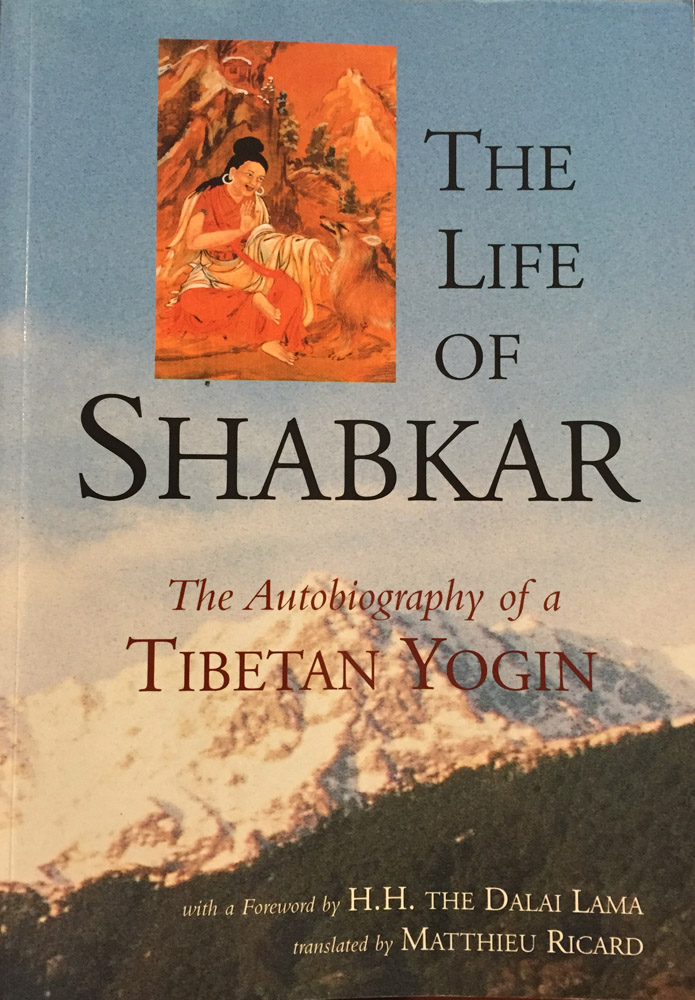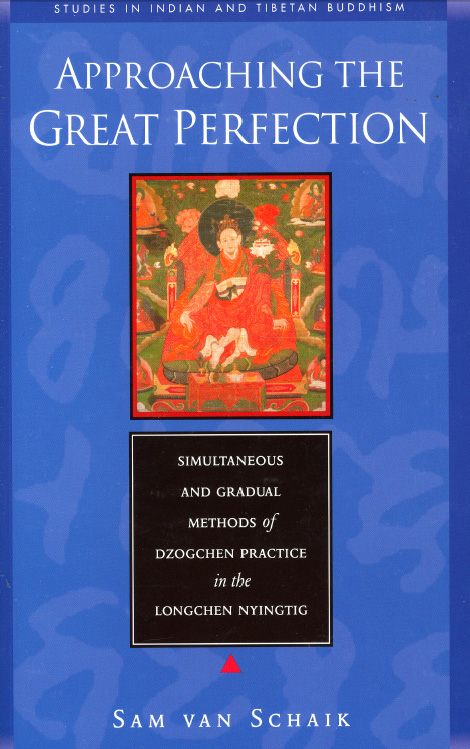Mahāmudrā and Buddha-Nature
Watch & Learn
In English with his direct, characteristic humor, Khenpo Rinpoche presents the "shining star" of buddha-nature in the minds of sentient beings as the same nature as the buddhas. He says, "We are always guided by this nature all the time whether we realize it or not."
From the Masters
Gampopa
As told by Gö Lotsāwa Zhönu Pal:
- དེ་ཡང་དྭགས་པོ་རིན་པོ་ཆེས་དཔལ་ཕག་མོ་གྲུ་པ་ལ། འོ་སྐོལ་གྱི་ཕྱག་རྒྱ་ཆེན་པོ་འདིའི་གཞུང་ནི་བཅོམ་ལྡན་འདས་བྱམས་པས་མཛད་པའི་ཐེག་པ་ཆེན་པོ་རྒྱུད་བླ་མའི་བསྟན་བཅོས་འདི་ཡིན་ཞེས་གསུངས་ཤིང་། དཔལ་ཕག་མོ་གྲུ་པས་ཀྱང་རྗེ་འབྲི་ཁུང་པ་ལ་དེ་སྐད་དུ་གསུངས་པས། རྗེ་འབྲི་ཁུང་པ་དཔོན་སློབ་ཀྱི་གསུང་རབ་རྣམས་སུ་ཐེག་པ་ཆེན་པོ་རྒྱུད་བླ་མའི་བཤད་པ་མང་དུ་འབྱུང་བ་དེ་ཡིན་ནོ།
- Moreover, Dagpo Rinpoché (Gampopa) said to Pagmo Drupa:
- "The basic text of this mahāmudrā of ours is the Mahāyānottaratantraśāstra (Ratnagotravibhāga) by Venerable Maitreya." Pagmo Drupa in turn said the same thing to Jé Drigungpa (Rje 'Bri gung pa), and for this reason many explanations of the Mahāyānottaratantraśāstra are found in the works of Jé Drigungpa and his disciples.
~ 'gos lo tsA ba gzhon nu dpal. Deb ther sngon po. Chengdu: Si khron mi rigs dpe skrun khang, 1984: Vol. 2, p. 847.
-Translation from Mathes, Klaus-Dieter. A Direct Path to the Buddha Within: Go Lotsāwa's Mahāmudrā Interpretation of the Ratnagotravibhāga. Studies in Indian and Tibetan Buddhism. Boston: Wisdom Publications, 2008: pp. 34-35.
As quoted by Śākya Chokden:
- དེ་ཡང་སྒམ་པོ་པས་གསུངས་པ། ང་ཡི་ཕྱག་རྒྱ་ཆེན་པོ་ཡི། ངོས་འཛིན་རང་གི་རིག་པ་སྟེ། གཞུང་ནི་རྒྱུད་བླའི་བསྟན་བཅོས་ཞེས།
- In that regard Gampopa says, “the hallmark of my Mahāmudrā is self-awareness and its scriptural source is the Uttaratantraśāstra”.
~ shAkya mchog ldan. gzhan blo’i dregs pa nyams byed in gsung 'bum. (Sachen International: Kathmandu, 2006), Vol. 17: p. 364.
-Translation adapted from Higgins, David and Martina Draszczyk. Mahāmudrā and the Middle Way: Post-Classical Kagyü Discourses on Mind, Emptiness and Buddha-Nature. Vienna: Arbeitskreis für Tibetische und Buddhistische Studien Universität Wien, 2016: Vol. 2, p. 17.
Further Readings
[The Life of Shabkar]
"Pure vision," the extraordinary outlook of the Vajrayana or Adamantine Vehicle, is to recognize Buddha-nature in all sentient beings and to see primordial purity and perfection in all phenomena. Every sentient being is endowed with the essence of Buddhahood, just as oil pervades every sesame seed. Ignorance is nothing more than lack of awareness of this very Buddha-nature, as when a pauper does not see the golden pot buried beneath his own hut. The spiritual path is thus a rediscovery of this forgotten nature, just as one sees again the immutable brilliance of the sun once the clouds that were masking it have been blown away.
~ Translator's Introduction, pg. xvii
The Vajrayana path is based on pure perception and is motivated by the aspiration to free swiftly oneself and others from delusion through skillful means. The Mahayana chiefly considers that the Buddha nature is present in every sentient being like a seed, or potentiality. The Vajrayana considers that this nature is fully present as wisdom or pristine awareness, the undeluded aspect and fundamental nature of the mind. Therefore, while the former vehicles are known as "causal vehicles," the Vajrayana is known as the "resultant vehicle." As it is said, "In the causal vehicles one recognizes the nature of mind as the cause of Buddhahood; in the resultant vehicle one regards the nature of mind as Buddhahood itself." Since the "result" of the path, Buddha hood, is primordially present, one only needs to actualize it or divest it of its veils.
~ pg. 551
The fruit of the Great Perfection
Is primordially present as the Buddha nature.
It does not need to be obtained:
It is ripe within oneself.
~ pg. 554
[Grounds of Buddha-Nature in Tibet]
The distinction that Śākya Chokden makes between two types of self-awareness reflects the distinction Longchenpa made between self-awareness (rang rig) in Yogācāra (or "Mind-Only") and the gnosis of self-awareness (so sor rang rig pa'i ye shes) in the Great Perfection (rdzogs chen). Longchenpa's distinction between the basic consciousness (kun gzhi) and the Truth Body (chos sku) similarly conveys this fundamental difference between distorted and undistorted worlds. In fact, Longchenpa distinguished his view of the Great Perfection from that of "Mind-Only" in terms of buddha-nature, expressed as the "basic element" (khams):
- Proponents of Mind-Only assert a changeless permanence and mere [ordinary] awareness as self-illuminating, but this position differs because we assert the unconditioned spontaneous presence beyond permanence and annihilation, and the spontaneously present qualities of the basic element."
[Approaching the Great Perfection]
The conflict between immanence and distinction is present within the scriptural texts of the Seminal Heart, from the Seventeen Tantras down to the Longchen Nyingtig's treasure texts. And it is in the Longchen Nyingtig's treasure texts themselves that some attempt to reconcile that conflict can be detected in the frequent appearance of the buddha nature model.



